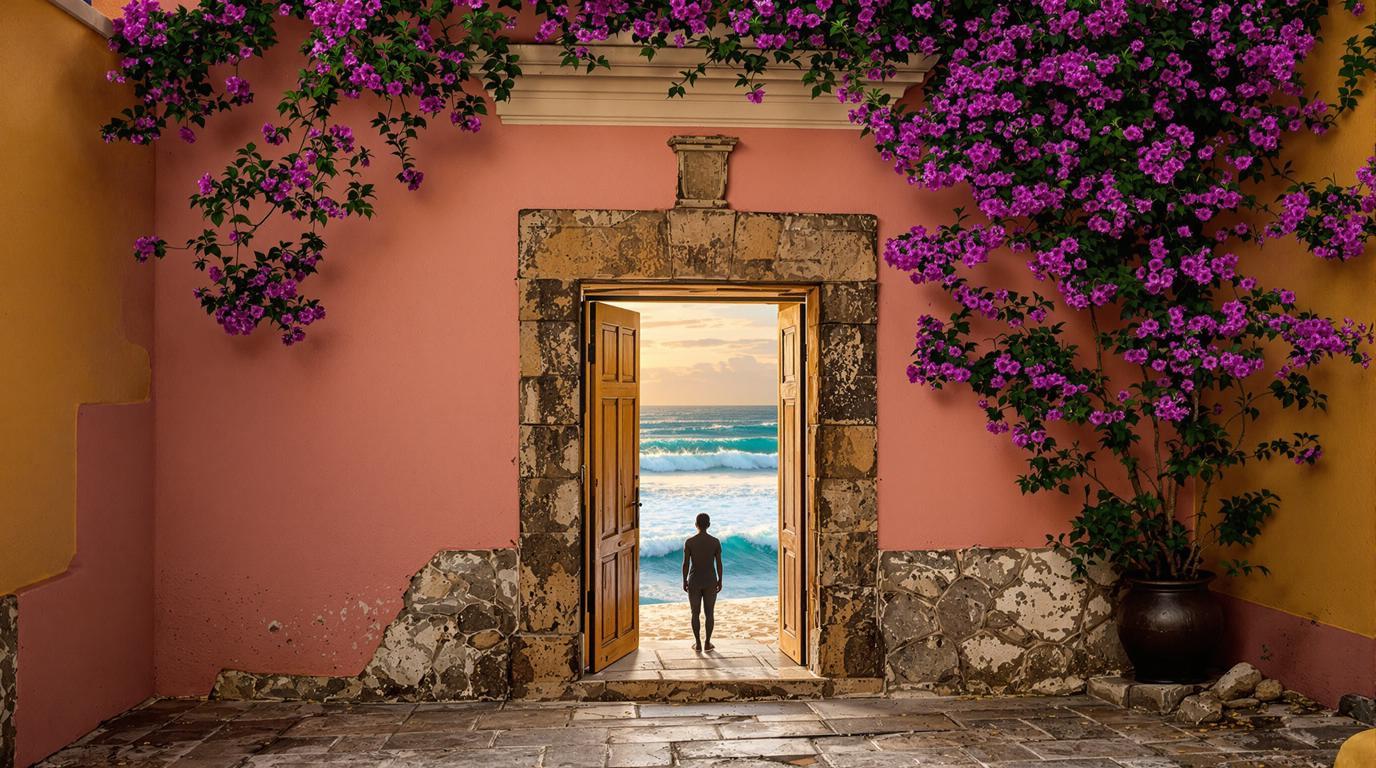The tiny island of Gorée, just a 30-minute ferry ride from Dakar, bears an emotional weight far heavier than its 45 acres. As our boat approaches, the rainbow array of pastel buildings creates a deceptively cheerful first impression that belies this UNESCO World Heritage site’s dark role in history—where an estimated 20 million Africans passed through on their journey to enslavement.
The Door of No Return
The island’s most powerful monument sits within an unassuming coral stone house. The Maison des Esclaves (House of Slaves) features a narrow doorway facing the Atlantic that symbolizes the final exit point for countless Africans before boarding slave ships.
“Standing before this door, you can almost hear the echoes of those who passed through,” explains Serigne, a local guide whose family has lived on Gorée for generations. “We preserve this place not to dwell in pain, but to ensure such horrors never happen again.”
A canvas of pastel dreams
Beyond its somber history, Gorée captivates visitors with architectural splendor. Narrow streets wind between buildings painted in weathered pink, yellow, and blue hues—their wooden balconies adorned with flowing bougainvillea. Unlike small American towns overwhelmed by tourism, Gorée maintains an authentic calm despite its historical significance.
Car-free tranquility
Perhaps Gorée’s most refreshing quality is its complete absence of vehicles. The island’s diminutive size makes it entirely walkable, creating an atmosphere of peaceful contemplation impossible to find in bustling Dakar. This vehicle-free existence resembles Scotland’s tidal-dependent Barra Island, though with year-round accessibility.
Where artisans keep history alive
Throughout Gorée, local artisans create vibrant paintings and sculptures that capture both the island’s beauty and its painful past. In small studios, craftspeople fashion intricate sand paintings and wooden sculptures, many depicting the island’s historical narrative through contemporary artistic expression.
“We tell our story through color and form,” says Ibou Ndoye, whose paintings have gained international recognition. “When you take our art home, you carry a piece of our collective memory.”
A culinary journey through Senegal
Despite its small size, Gorée offers remarkable dining experiences. Waterfront restaurants serve traditional Senegalese dishes like thieboudienne (fish and rice) and mafé (peanut stew). These flavorful meals, enjoyed with views of Dakar’s skyline across the water, provide a perfect respite between historical explorations.
Beyond the tourist path
While most visitors focus solely on the House of Slaves, those who linger discover hidden treasures. The Historical Museum of Senegal occupies the restored Fort d’Estrées, offering context to Gorée’s complex past. For beach lovers seeking pristine shores like Kenya’s hidden coastal gems, Gorée’s small beaches provide quiet swimming spots with surprisingly clear water.
Where cultures merge
The island’s unique history created a cultural fusion visible in its architecture, cuisine, and traditions. Unlike isolated Pacific islands with preserved indigenous cultures, Gorée represents centuries of African, European, and Arab influences coexisting in remarkable harmony.
“Gorée is where Africa meets Europe and creates something entirely new,” explains historian Dr. Aminata Diop. “Our buildings may look European, but the spirit inside them remains deeply African.”
Practical matters
Ferries depart regularly from Dakar’s harbor, with tickets costing around $10 round-trip. While day trips are common, staying overnight in one of the island’s small guesthouses offers a more immersive experience once the day-trippers depart. Unlike elevated French villages with difficult access, Gorée remains relatively easy to visit year-round.
As the ferry pulls away from Gorée’s shores, visitors carry with them not just photographs of pretty pastel buildings, but a profound connection to a place where beauty and sorrow intertwine—a tiny island that forever changed the world through its pivotal role in human history.
